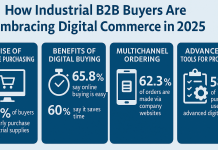Digital banking has become such an important element of how customers do business that it has practically eliminated the necessity for banks and credit unions to maintain a physical presence.
Financial applications and the mobile devices that run them are so common that many younger consumers have never stepped foot in a bank to make a deposit or apply for a loan. Credit unions must continue to deliver face-to-face banking to members who are used to the conventional, customized services they provide. Nonetheless, credit unions must strike a balance between this and the adoption of more advanced digital services that fulfill the interests of consumers who prefer not to visit a financial institution.
“Millennials and Gen Zers want quick gratification, so accessing the services they signed up for should happen on the move,” Damian Jakubczyk, vice president of digital innovation at Denver-based Canvas Credit Union, recently told PYMNTS. “However, more mature generations are focusing on the simplicity of use, thus the experience of those programs should be nearly self-explanatory.”
Credit unions have been particularly pressed to compete with both larger financial institutions (FIs) and more agile FinTechs. As non-profit entities, credit unions must strike a balance between fees, interest rates, personal service, and profitability. As a result, they frequently have less cash to spend on digital transformation than their profit-driven peers.
“Credit unions must improve on numerous fronts in order to serve those members that FinTechs specialize in and attempt to capture,” he added. “Seamless experiences, as well as harnessing the rich data that we have and putting it to good use to create that tailored member experience, remain front of mind.”












